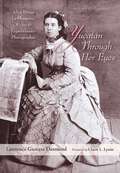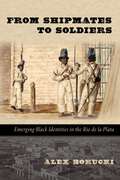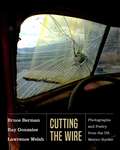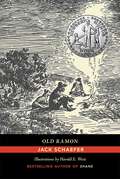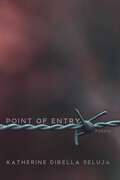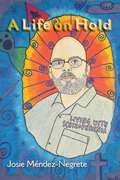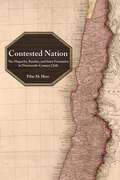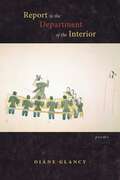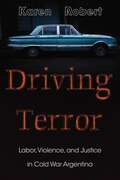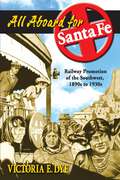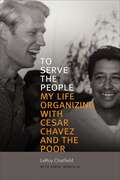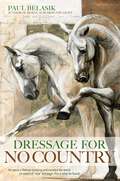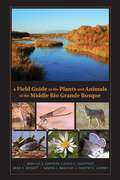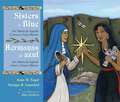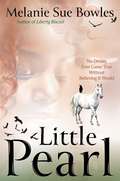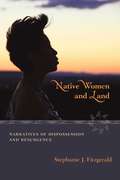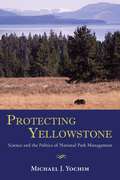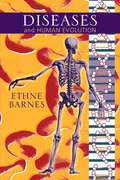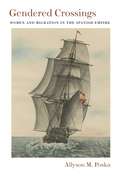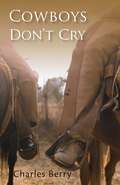- Table View
- List View
Yucatan Through Her Eyes: Alice Dixon Le Plongeon, Writer and Expeditionary Photographer
by Lawrence Gustave DesmondAlice Dixon (1851-1910) was born into a comfortable middle class life in London that she eagerly left behind to travel to Yucatán as the young bride of Maya archaeologist Augustus Le Plongeon. Working side by side as photographers and archaeologists, the Le Plongeons were the first to excavate and systematically photograph the Maya sites of Chichén Itzá and Uxmal. After spending eleven years in the field, she devoted the rest of her life to lecturing and published books and articles on a wide range of topics, including her exploration of Maya civilization, political activism and social justice, and epic poetry. Alice's papers became public in 1999 and included photographs, unpublished manuscripts, correspondence, and a handwritten diary; over two thousand of her prints and negatives survive today in public and private collections. Combined with Lawrence Desmond's biography of this remarkable woman's life, her diary offers readers a rare glimpse of life in the Yucatán peninsula during the final quarter of the nineteenth century, and an insider's view of fieldwork just prior to the emergence of Mesoamerican archaeology as a professional discipline.
From Shipmates to Soldiers: Emerging Black Identities in the Río de la Plata (Diálogos Series)
by Alex BoruckiAlthough it never had a plantation-based economy, the Río de la Plata region, comprising present-day Argentina, Uruguay, and Paraguay, has a long but neglected history of slave trading and slavery. This book analyzes the lives of Africans and their descendants in Montevideo and Buenos Aires from the late colonial era to the first decades of independence. The author shows how the enslaved Africans created social identities based on their common experiences, ranging from surviving together the Atlantic and coastal forced passages on slave vessels to serving as soldiers in the independence-era black battalions. In addition to the slave trade and the military, their participation in black lay brotherhoods, African &“nations,&” and the lettered culture shaped their social identities. Linking specific regions of Africa to the Río de la Plata region, the author also explores the ties of the free black and enslaved populations to the larger society in which they found themselves.
Cutting the Wire: Photographs and Poetry from the US-Mexico Border
by Ray Gonzalez Bruce Berman Welsh LawrenceCutting the Wire, a masterful collaboration between photographer Bruce Berman and poets Ray Gonzalez and Lawrence Welsh, offers us a way to look again, to really look, at the border between Mexico and the United States. Berman, who has photographed and lived in El Paso for decades, is a documentarian who uses his camera to record what&’s in front of him rather than for, as he puts it, &“mere self-expression.&” Berman&’s visual investigations of the everyday realities of the border—detention centers, smeltertown cemeteries, kids playing along a river levee, descanso crosses on telephone poles for the disappeared—are exactly the stuff the poetry of Gonzalez and Welsh is made of. The multilayered histories of the border landscape provide an inexhaustible supply of rich and fertile raw material for both Gonzalez and Welsh. But their poetic visions allow them to capture elements of a personal and collective past that historians have often failed to record.
Progress on the Subject of Immensity (Mary Burritt Christiansen Poetry Series)
by Leslie Ullman&“For over thirty years now, Leslie Ullman has steadily refined a poetry of the most acute and lyrically precise mindfulness, of what one of her poems calls the &‘greater alertness.&’ This method has been forged in part by her ability to render the harsh beauties of the southwestern landscapes that have been her adopted home. More important still, however, is her almost shamanistic willingness to visit those liminal states between waking and dreaming, conventional reality and phantasm—states that sometimes offer menace, sometimes wonderment. This is all to say that Leslie Ullman is a poet of the first order, writing at the height of her very considerable powers.&”—David Wojahn, author of World Tree
Old Ramon
by Jack SchaeferAwarded a 1961 Newbery Honor, Old Ramon tells the timeless coming-of-age story of a young boy who spends a summer with an old shepherd in the Mojave Desert. He leaves his textbooks behind for real life lessons with Ramon as his mentor. He learns not only how to care for the sheep but how to overcome fear, how to face death and responsibility, and the difference between being alone and being lonely. Written in Schaefer&’s charming and engaging style, the novel details a boy&’s discovery of both the value of friendship and the hardship of life.
Point of Entry: Poems (Mary Burritt Christiansen Poetry Series)
by Katherine DiBella SelujaIn this remarkable collection, Katherine DiBella Seluja explores issues surrounding human migration, juxtaposing poems about the current struggles along the US–Mexican border with her ancestors&’ experiences of migrating from Italy. Rich in sonic and sensory detail, these poems speak to the strength and resilience of those who leave their ancestral homes in search of safety and opportunities to thrive.
A Life on Hold: Living with Schizophrenia
by Josie Méndez-NegreteFor more than twenty years Josie Méndez-Negrete has endured the emotional journey of watching her son Tito struggle with schizophrenia. Her powerful account is the first memoir by a Mexican American author to share the devastation and hope a family experiences in dealing with this mental illness. Méndez-Negrete depicts the evolution of the disease from her perspective as a parent and by relating Tito&’s own narrative, illuminating the inadequacies of the US mental health system and the added burdens of addiction and blame. Through the author, Tito paints a vivid picture of his lived experiences and everyday traumas to show how his life and the lives of his loved ones have been impacted by mental illness.
Graciela: One Woman's Story of War, Survival, and Perseverance in the Peruvian Andes
by Nicole Coffey Kellett with Graciela Orihuela RochaGraciela chronicles the life of a Quechua-speaking Indigenous woman in the remote Andean highlands during the war in Peru that killed seventy thousand people and displaced hundreds of thousands more in the 1980s and 1990s. The book traces her early years as a young child living in an epicenter of violence to her contemporary life as a postwar survivor. Graciela Orihuela Rocha&’s history embodies the horrors, injustices, promises, and challenges faced by countless individuals who endured and survived the war. Her story provides intimate insights into deep-seated divisions within Peruvian society that center around skin color, gender, language, and ties to the land. These fault lines have endured to the present day, fostering discontent and violence in Peru.Through Graciela&’s story we not only learn of trauma and dehumanization but also resilience, strength, and perseverance. Graciela&’s history provides insight into the systemic challenges of determining truth, implementing justice, and envisioning reconciliation in a country where calls for equality and justice remain unrealized for the most marginalized.
Contested Nation: The Mapuche, Bandits, and State Formation in Nineteenth-Century Chile
by Pilar M. HerrThroughout the colonial period the Spanish crown made numerous unsuccessful attempts to conquer Araucanía, Chile&’s southern borderlands region. Contested Nation argues that with Chilean independence, Araucanía—because of its status as a separate nation-state—became essential to the territorial integrity of the new Chilean Republic. This book studies how Araucanía&’s indigenous inhabitants, the Mapuche, played a central role in the new Chilean state&’s pursuit of an expansionist policy that simultaneously exalted indigenous bravery while relegating the Mapuche to second-class citizenship. It also examines other subaltern groups, particularly bandits, who challenged the nation-state&’s monopoly on force and were thus regarded as criminals and enemies unfit for citizenship in Chilean society.Pilar M. Herr&’s work advances our understanding of early state formation in Chile by viewing this process through the lens of Chilean-Mapuche relations. She provides a thorough historical context and suggests that Araucanía was central to the process of post-independence nation building and territorial expansion in Chile.
Report to the Department of the Interior: Poems (Mary Burritt Christiansen Poetry Series)
by Diane GlancyConstructed as a series of reports to the Department of the Interior, these poems of grief, anger, defiance, and resistance focus on the oppressive educational system adopted by Indian boarding schools and the struggle Native Americans experienced to retain and honor traditional ways of life and culture.
Untangling a Red, White, and Black Heritage: A Personal History of the Allotment Era
by Darnella DavisExamining the legacy of racial mixing in Indian Territory through the land and lives of two families, one of Cherokee Freedman descent and one of Muscogee Creek heritage, Darnella Davis&’s memoir writes a new chapter in the history of racial mixing on the frontier. It is the only book-length account of the intersections between the three races in Indian Territory and Oklahoma written from the perspective of a tribal person and a freedman.The histories of these families, along with the starkly different federal policies that molded their destinies, offer a powerful corrective to the historical narrative. From the Allotment Period to the present, their claims of racial identity and land in Oklahoma reveal inequalities that still fester more than one hundred years later. Davis offers a provocative opportunity to unpack our current racial discourse and ask ourselves, &“Who are &‘we&’ really?&”
Driving Terror: Labor, Violence, and Justice in Cold War Argentina (Diálogos Series)
by Karen RobertDriving Terror tells the story of twenty-four Ford autoworkers in Argentina who were tortured and &“disappeared&” for their union activism in 1976, miraculously survived, and pursued a decades-long quest for truth and justice. In December 2018, more than four decades after their ordeal, the men won a historic human-rights case against a military commander and two retired Ford Argentina executives who were convicted of crimes against humanity.The book uses this David-and-Goliath story to explore issues of labor repression and corporate complicity with Argentina&’s last military dictatorship as well as to shed light on the enormous obstacles facing victims of such crimes. Its emphasis on working-class activism in the arenas of labor and human rights introduces North American readers to a new narrative of contemporary Argentine history.The Ford survivors&’ story intertwines with the symbolic evolution of the car the men helped build at Ford: the Falcon sedan. The political polarization and violence of the Cold War era transformed the Falcon from a popular family car to a tool of state terror after the coup of 1976, when it became associated with the widespread practice of &“disappearance.&” Its meaning continued to evolve after the return to democracy, when artists and activists used it as a symbol of military impunity during Argentina&’s long-term struggles over justice and memory.
All Aboard for Santa Fe: Railway Promotion of the Southwest, 1890s to 1930s
by Victoria E. DyeBy the late 1800s, the major mode of transportation for travelers to the Southwest was by rail. In 1878, the Atchison, Topeka, and Santa Fe Railway Company (AT&SF) became the first railroad to enter New Mexico, and by the late 1890s it controlled more than half of the track-miles in the Territory. The company wielded tremendous power in New Mexico, and soon made tourism an important facet of its financial enterprise.All Aboard for Santa Fe focuses on the AT&SF's marketing efforts to highlight Santa Fe as an ideal tourism destination. The company marketed the healthful benefits of the area's dry desert air, a strong selling point for eastern city-dwelling tuberculosis sufferers. AT&SF also joined forces with the Fred Harvey Company, owner of numerous hotels and restaurants along the rail line, to promote Santa Fe. Together, they developed materials emphasizing Santa Fe's Indian and Hispanic cultures, promoting artists from the area's art colonies, and created the Indian Detours sightseeing tours. All Aboard for Santa Fe is a comprehensive study of AT&SF's early involvement in the establishment of western tourism and the mystique of Santa Fe.
To Serve the People: My Life Organizing with Cesar Chavez and the Poor
by LeRoy ChatfieldThe long pilgrimage of LeRoy Chatfield weaves its way through multiple collective projects designed to better the condition of the marginalized and forgotten. From the cloisters of the Christian Brothers and the halls of secondary education to the fields of Central California and the streets of Sacramento, Chatfield&’s story reveals a fierce commitment to those who were denied the promises of the American dream. In this collection of what the author calls Easy Essays, Chatfield recounts his childhood, explains the social issues that have played a significant role in his life and work, and uncovers the lack of justice he saw all too frequently. His journey, alongside Cesar and Helen Chavez, Marshall Ganz, Bonnie Chatfield, Philip Vera Cruz, and countless others, displays an unwavering focus on organizing communities and expanding their agency. Follow and explore a life dedicated to equality of opportunity for all. May it inspire and guide you in your quest for a fairer and more just society.
The Book of Literary Terms: The Genres of Fiction, Drama, Nonfiction, Literary Criticism, and Scholarship, Second Edition
by Lewis TurcoThe much-anticipated second edition of The Book of Literary Terms features new examples and terms to enhance Turco&’s classic guide that students and scholars have relied on over the years as a definitive resource for the definitions of the major terms, forms, and styles of literature. Chapters covering fiction, drama, nonfiction, and literary criticism and scholarship offer readers a comprehensive guide to all forms of prose and their many sub-genres.From &“Utopian novel,&” &“videotape,&” and &“yellow journalism&” to &“kabuki play,&” &“Personalism,&” and &“Poststructuralism,&” this book is a valuable reference offering an extensive world of knowledge. Every teacher, student, critic, and general lover of literature should be sure to add The Book of Literary Terms to their library.
Dressage for No Country
by Paul BelasikIn the 1970s, the sport of dressage was still in its infancy in the United States. Unlike the countries of Europe, there was neither an established tradition nor a written history to educate and inspire. A rider intent on learning the discipline had to be prepared to travel, to immerse himself in other cultures, and to care only for what those who had already mastered the art might teach him. Paul Belasik was this rider, intent on learning all he could about dressage methodology, and willing and able to compare and contrast the various means for achieving related goals: beautiful movement, &“lightness,&” connection between two beings. In these pages he shares a lifetime of searching and studying, both through stories of his own adventures and thoughtful essays on the subjects he has pondered during the years he has trained and ridden horses. Beginning in northern New York, and traveling to Portugal, and later, Vienna, Belasik serves as a tour guide of the various dressage &“paths&” he had the chance to explore, including the German system, the Portuguese art of equitation, and the revered institutions of the Spanish Riding School. Armed with the knowledge and experience he accrued over time, Belasik debates whether classical dressage and competition dressage are at all compatible. Then, he considers the role of mindfulness, how to become a good teacher, and how to be a good student in today's horse world, providing the guideposts needed to take dressage–and riding, in general–the next step forward.
A Field Guide to the Plants and Animals of the Middle Rio Grande Bosque
by Jean-Luc E. Cartron Timothy Lowrey Mygatt JaneExtending from the spillway below Cochiti Dam, about fifty miles north of Albuquerque, to the headwaters of Elephant Butte Reservoir, near Truth or Consequences in the southern portion of New Mexico, the Middle Rio Grande Bosque is more than a cottonwood woodland or forest. It is a complete riverside ecosystem, among the more important in the world's arid regions.Every day hundreds of visitors to the bosque encounter flora and fauna they can't identify. Researchers and municipal, county, state, and federal resource agency personnel concerned with the bosque's management need to know how plants and animals are linked to their habitats.With descriptions of more than seven hundred plants and animals illustrated with color photographs, this authoritative guide is the first of its kind for the Middle Rio Grande Bosque and is an invaluable resource for land managers, teachers, students, eco-buffs, and nature enthusiasts. It also reveals the important role the bosque plays in New Mexico's natural heritage.
Sisters in Blue/Hermanas de azul: Sor María de Ágreda Comes to New Mexico/ Sor María de Ágreda viene a Nuevo México (Querencias Series)
by Enrique R. Lamadrid Anna M. NogarSisters in Blue tells the story of two young women—one Spanish, one Puebloan—meeting across space and time. Sor María de Jesús de Ágreda, New Mexico&’s famous Lady in Blue, is said to have traveled to New Mexico in the seventeenth century. Here Anna M. Nogar and Enrique R. Lamadrid bring her to life, imagining an encounter between a Pueblo woman and Sor María during the nun&’s mystical spiritual journeys. Tales of Sor María, who described traveling across the earth and the heavens, have traditionally presented her as an evangelist who helped bring Catholicism to the Pueblos. Instead this book, which includes an essay providing historical context, shows a connection between Sor María and her friend Paf Sheuri. The two women find more similarities than differences in their shared experiences, and what they learn from each other has an impact for centuries to come.
Asha and Baz Meet Gladys West (Asha and Baz)
by Caroline FernandezAsha and Baz face a class challenge about cardinal directions (North, East, South, West). They travel back in time to meet Gladys West whose math helped to create modern-day GPS.While visiting the community garden with their class, their teacher assigns a challenge: use a compass rose and a map to uncover parts of a secret message hidden around the garden.When trying to follow the instructions on the map leaves the best friends feeling lost, they look to the past for guidance. Together, they magically travel to 1978, to meet mathematician Gladys West.Gladys is working on her own important project using a satellite to map the ocean, and with her help, Asha and Baz might just find their way.
Little Pearl
by Melanie Sue BowlesIn this soulful sequel to the crowd favoriteLiberty Biscuit,a young teenager learns that no dream ever came true without believing it would.Katherine Pearl Baker—&“Kip&” for short—has just gone from being the only child on her family&’s rural peach farm to becoming a big sister. As her world and the people in it change in order to welcome a tiny new family member, Kip finds herself afloat, wondering if the place she&’s carved out in life is the right one for her, after all.While wandering one day in the woods she loves, Kip finds an old fence post bearing odd marks that appear to be symbols from a time long ago. Her discovery leads her to once again uncover a family secret and stories as yet untold about the ones she loves. What she learns tests her cherished relationship with her grandfather, as she recognizes a certain kind of loneliness within him for the first time and then must face what the resolution of that loneliness might mean.Adding a starving horse named &“Pearl&” to her herd of rescued horses and beloved donkey Liberty Biscuit provides Kip a needed purpose, and the barn becomes her refuge as she struggles with her own uncomfortable secret. Desperate to tell her parents but embarrassed and unsure of how, it takes the return of a boy she trusts for her to finally admit that her path might be different than others planned it would be. The trouble is, Kip isn&’t sure she can be brave enough to put her voice to her thoughts and share them.As the sweet-natured Little Pearl gradually regains her strength and beauty through Kip&’s thoughtful care, and the wary and distant Raven begins to trust Kip&’s presence and her touch, Kip feels the flame of a new dream flicker to life. With the birth of this dream, a level of understanding grows, not only of her horses, but of her grandfather, and eventually, of herself.Ages 9-13
Native Women and Land: Narratives of Dispossession and Resurgence
by Stephanie J. Fitzgerald&“What roles do literary and community texts and social media play in the memory, politics, and lived experience of those dispossessed?&” Fitzgerald asks this question in her introduction and sets out to answer it in her study of literature and social media by (primarily) Native women who are writing about and often actively protesting against displacement caused both by forced relocation and environmental disaster. By examining a range of diverse materials, including the writings of canonical Native American writers such as Louise Erdrich, Linda Hogan, and Elizabeth Cook-Lynn, and social media sites such as YouTube and Facebook, this work brings new focus to analyzing how indigenous communities and authors relate to land, while also exploring broader connections to literary criticism, environmental history and justice, ecocriticism, feminist studies, and new media studies.
Protecting Yellowstone: Science and the Politics of National Park Management
by Michael J. YochimYellowstone National Park looks like a pristine western landscape populated by its wild inhabitants: bison, grizzly bears, and wolves. But the bison do not always range freely, snowmobile noise intrudes upon the park&’s profound winter silence, and some tourist villages are located in prime grizzly bear habitat. Despite these problems, the National Park Service has succeeded in reintroducing wolves, allowing wildfires to play their natural role in park forests, and prohibiting a gold mine that would be present in other more typical western landscapes.Each of these issues—bison, snowmobiles, grizzly bears, wolves, fires, and the New World Mine—was the center of a recent policy-making controversy involving federal politicians, robust debate with interested stakeholders, and discussions about the relevant science. Yet, the outcomes of the controversies varied considerably, depending on politics, science, how well park managers allied themselves with external interests, and public thinking about the effects of park proposals on their access and economies. Michael Yochim examines the primary influences upon contemporary national park policy making and considers how those influences shaped or constrained the final policy. In addition, Yochim considers how park managers may best work within the contemporary policy-making context to preserve national parks.
Diseases and Human Evolution
by Ethne BarnesUrgent interest in new diseases, such as the coronavirus, and the resurgence of older diseases like tuberculosis has fostered questions about the history of human infectious diseases. How did they evolve? Where did they originate? What natural factors have stalled the progression of diseases or made them possible? How does a microorganism become a pathogen? How have infectious diseases changed through time? What can we do to control their occurrence? ;Ethne Barnes offers answers to these questions, using information from history and medicine as well as from anthropology. She focuses on changes in the patterns of human behavior through cultural evolution and how they have affected the development of human diseases. ;Writing in a clear, lively style, Barnes offers general overviews of every variety of disease and their carriers, from insects and worms through rodent vectors to household pets and farm animals. She devotes whole chapters to major infectious diseases such as leprosy, syphilis, smallpox, and influenza. Other chapters concentrate on categories of diseases (gut bugs, for example, including cholera, typhus, and salmonella). The final chapters cover diseases that have made headlines in recent years, among them mad cow disease, West Nile virus, and Lyme disease. ;In the tradition of Berton Roueché, Hans Zinsser, and Sherwin Nuland, Ethne Barnes answers questions you never knew you had about the germs that have threatened us throughout human history.
Gendered Crossings: Women and Migration in the Spanish Empire (Diálogos Series)
by Allyson M. PoskaBetween 1778 and 1784 the Spanish Crown transported more than 1,900 peasants, including 875 women and girls, from northern Spain to South America in an ill-fated scheme to colonize Patagonia. The story begins as the colonists trudge across northern Spain to volunteer for the project and follows them across the Atlantic to Montevideo. However, before the last ships reached the Americas, harsh weather, disease, and the prospect of mutiny on the Patagonian coast forced the Crown to abandon the project. Eventually, the peasant colonists were resettled in towns outside of Buenos Aires and Montevideo, where they raised families, bought slaves, and gradually integrated into colonial society. Gendered Crossings brings to life the diverse settings of the Iberian Atlantic and the transformations in the peasants&’ gendered experiences as they moved around the Spanish Empire.
Cowboys Don't Cry
by Charles BerryScout McBride was born into ranching life in the West Texas desert outside El Paso. He learned to ride a horse almost before he could walk, grew up communicating with animals around the harsh land, and spoke Spanish with his first friend, a boy from Mexico. It was a tough environment for one so young and as Scout follows a rugged path to becoming a man, he knows that to emulate the men he admires, he must keep one thing in mind: Cowboys don't cry.
